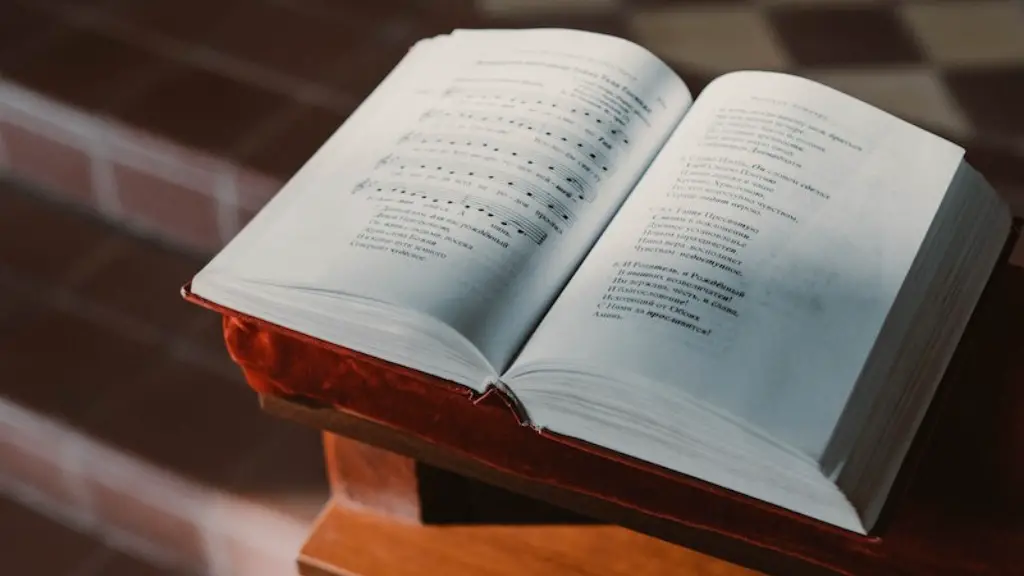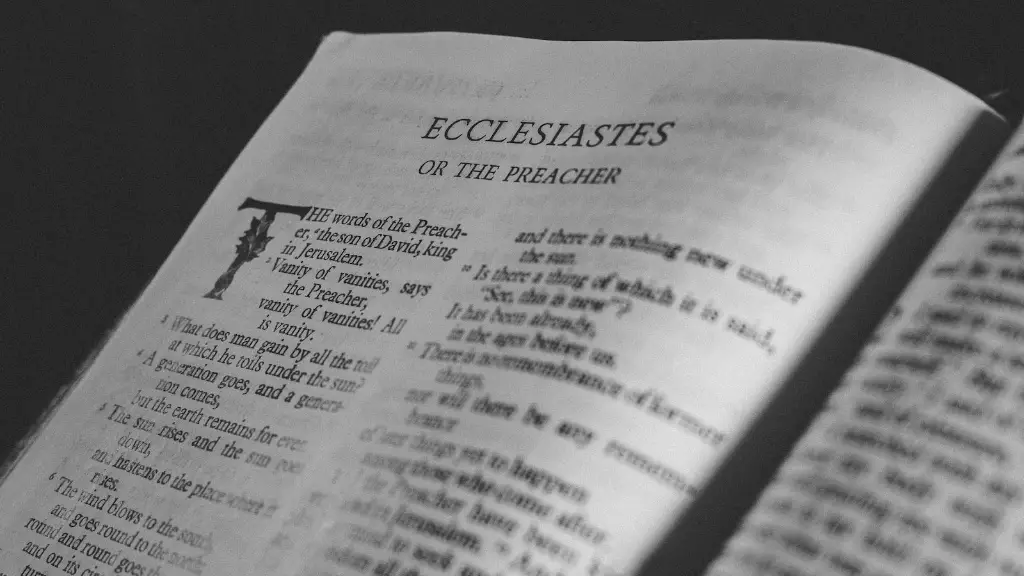Bethany in the Bible
Bethany is a small village located on the eastern slope of the Mount of Olives, in what is now the West Bank. The village is mentioned several times in the New Testament, most notably when Jesus visited on Palm Sunday, his triumphal entry into Jerusalem. It is a place of great historical and religious importance, and understanding the biblical context surrounding Bethany is key to understanding Jesus’ ministry and the surrounding events.
The village of Bethany appears only in the New Testament, although archaeological evidence suggests that it already existed prior to the time of Jesus. Late Bronze Age artifacts—such as pottery shards, coins and other small objects—have been found at the site. According to some scholars, the presence of these artifacts indicates that the area was inhabited by farmers or shepherds, who were likely the descendants of the ancient Israelites.
The two most famous episodes involving Bethany are Jesus’ visit on Palm Sunday and the resurrection of Lazarus. In John 12, upon his entrance into Jerusalem, Jesus stops in Bethany to spend time with his friends, Mary, Martha, and Lazarus. In the celebration and procession, Jesus rides into Jerusalem on a donkey, with his disciples and onlookers shouting, “Hosanna in the highest.”
In John 11, the resurrection of Lazarus is the climax of the Bethany narrative. In this story, Jesus and his disciples travel to Bethany upon hearing the news that Mary and Martha’s brother Lazarus was ill. Although Jesus arrived four days after Lazarus had died, Jesus commanded that the stone that covered the tomb be rolled away and he prayed. He then called Lazarus, who walked back out of the tomb, to the amazement of the onlookers. This event was a major milestone in the growth of Jesus’ ministry and led to a great amount of turmoil between the Pharisees, Jesus and his beloved disciples.
The power of the resurrection is still felt today and stands as a reminder of Jesus’ power over death, and of his faith in his followers. It is also a testament to the importance of the village of Bethany in Jesus’ life, and in the Bible itself.
The People of Bethany
The major figures associated with Bethany are Mary, Martha and Lazarus. Mary and Martha were likely sisters, although their exact relationship is not specified in the Bible. Although they appear in the same contexts, their personalities provide interesting contrasts. Martha is portrayed as the active and business-minded one, taking charge and demonstrating her hospitality to Jesus, while Mary is portrayed as the more contemplative one, remaining with Jesus, even after his arrival.
Lazarus is the brother of Mary and Martha, and is also known as the patron saint of lost causes. According to tradition, Lazarus was a beggar after his resurrection and as such, he is known as a symbol of hope and possibility in times of despair and suffering.
The three siblings are generally thought to have own a house near the Mount of Olives, which is where the events in Bethany often took place. In addition, the siblings likely had an extended family, including their parents, although these figures are not named in the Bible.
The Significance of Bethany
Bethany was the site of two iconic events in Jesus’s ministry, events which have been celebrated differently by theologians and scholars throughout history. The triumphal entry into Jerusalem on Palm Sunday is seen as a celebration of Jesus’ entry into His heavenly home, while the resurrection of Lazarus demonstrates Jesus’ power to bring life from death.
The Bethany narratives demonstrate the importance of family, friendship and faith. In the stories, Jesus demonstrates his power of healing and his loyalty to his close friends. Additionally, the events of Bethany serve to illustrate the eternal struggle between faith in Jesus and the skepticism of the Pharisees.
In the present day, Bethany continues to be a site of pilgrimage and worship for Christians from around the world. It is a reminder of Jesus’ love for his followers and his power over death, and serves as a testament to the importance of faith in the Bible and in everyday life.
Bethany as a Symbol
Bethany is often used as a symbol of hope, faith and resurrection. It is seen as an example of how Jesus is “the resurrection and the life”, as written in John 11:25. It is also seen as a symbol of home and security. Jesus was welcomed into Bethany by his friends and held in the domestic, familial sphere. In a world filled with chaos and despair, Bethany is a reminder that there can still be a place of peace and hope.
Bethany has also become a symbol of liberation. In the resurrection of Lazarus, Jesus claims victory over death, but also declares freedom from oppression. In the village of Bethany, Jesus is proclaimed as a leader of a different way of thinking, and is celebrated for his teachings of love, mercy and forgiveness.
The symbolism of Bethany is a reminder that Jesus’ message is still relevant today and provides hope in a troubled world. As people reflect on the events of Bethany, they are reminded of Jesus’ compassion and power over death, and of his commitment to his followers.
Bethany in Popular Culture
As a symbol of hope and of divine power, Bethany has become an important aspect of popular culture. It has been featured in literature, movies, art, and music. A common depiction of Bethany is in the traditional Palm Sunday processions, in which a donkey is ridden through the streets. In art, Bethany is a popular subject, being featured in stained glass, sculptures and glazed tiles.
In music, ‘Lazarus of Bethany’ is a popular Christian hymn, as well as a popular theme in baroque and classical music. It honors Jesus’s power to bring life from death, as well as his willingness to be there for his friends.
The presence of Bethany in popular culture has brought greater attention to the biblical events that took place there and the symbolism it has come to represent. As a result, Bethany continues to be an important occasion for worship and pilgrimage.
Bethany’s Impact on Modern Christianity
The events of Bethany continue to impact and shape modern Christianity today. In the resurrection story, Jesus declares his power and faith over death as well as his trust in his disciples, and provides a powerful image of hope and healing. This story has been celebrated by Christians all over the world.
In addition, it has become an important symbol for the struggles that many Christians face today. This can be extended to oppressive political systems, racism and persecution. As people look to the resurrected Lazarus and Jesus for support, they are reminded of the importance of faith and hope in a world of suffering.
In addition, Bethany is a reminder of Jesus’ commitment to his followers. His love for his friends and his willingness to actively engage with them, even in the midst of upheaval, is encouraging for Christians today. His mission to bring life and liberty to the oppressed can be used as a model for Christian confrontations and activities in the world today.
The Importance of Remembering Bethany
As Christians look back to the events of Bethany, they are reminded of Jesus’ power, love and commitment to his followers. By remembering these stories, they are reminded of Jesus’ ability to bring hope and healing in times of suffering, his commitment to his followers and his power over death.
Bethany is an important reminder of the power of faith and of Jesus’ willingness to enter into our struggles and to fight for justice and liberty. It is a symbol of Jesus’ love for his people, for liberation and for healing. It is a reminder that he is still present in our lives today and that he will never abandon us.
Bethany is a reminder of hope and possibility, and of the strength of faith and love. It is a reminder that Jesus is “the way, the truth, and the life” and that his power is still relevant and accessible today.
The Impact of Bethany on Other Religions
Bethany has also impacted other religions, particularly the Jewish faith. Whilst the majority of Jews do not accept the New Testament narrative, many Jews can still appreciate the symbolism of Bethany, such as Lazarus’ resurrection as a symbol of freedom and hope. Jews can also look to the events of Bethany as a reminder of the importance of family, hospitality and compassion.
The events of Bethany also have a deep meaning in Islam. According to Islamic tradition, Jesus is considered a respected prophet and his miracles—including the resurrection of Lazarus—are accepted by Muslims. As such, the events of Bethany are seen as a reflection of Jesus’ power and of God’s grace.
The significance of the events of Bethany extend well beyond Christianity. It is a reminder of the power of faith and of God’s love for His people, no matter their faith or background.
Conclusion
The events of Bethany have deeply impacted religious and cultural history, and the site itself is a lasting reminder of Jesus’ love and power. In the resurrection of Lazarus, Jesus claims victory over death and declares liberty from oppression. It is a reminder of Jesus’ commitment to his followers, of his power to bring life from death, and of the importance of faith and love. Bethany is a symbol of hope, of healing and of divine grace, and it continues to be a source of comfort and strength for believers around the world.


